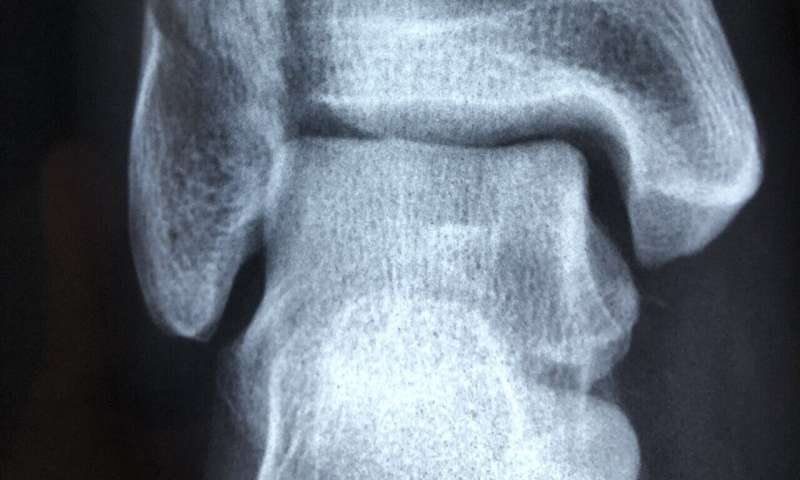This article has been reviewed according to Science X's editorial process and policies. Editors have highlighted the following attributes while ensuring the content's credibility:
fact-checked
peer-reviewed publication
trusted source
proofread
New AI algorithm identifies risk of falls and fracture for older women

A new automated machine-learning algorithm has been developed by researchers at Edith Cowan University (ECU). The algorithm accurately assesses abdominal aortic calcification (AAC) during routine bone density testing. AAC is a recognized measure of advanced vascular disease.
The new detection method significantly shortens the timeframe to screen for AAC. Compared with the five to six minutes it would take an experienced reader to obtain an AAC score from one image, the new algorithm takes less than a minute to predict AAC scores for hundreds of images
"We know that moderate to extensive AAC, seen in one in two of these older women, is associated with falls and fractures. Determining whether these relationships remain comparable after automation is a critical step to enhance the clinical utility of lateral spine images taken during bone density testing."
A study headed by ECU Post Doctoral Research Fellow Dr. Jack Dalla Via was recently published in the Journal of Bone and Mineral Research. It found women with moderate to extensive AAC, derived through the algorithm, had an increased risk of fall-related hospitalization and clinical fractures, compared to those with low AAC. The study is the first of its kind, revealing that automatically assessed AAC can identify older woman at an increased risk of falls and fractures.
Dr. Dalla Via said that an automated algorithm would allow AAC to be instantaneously and seamlessly assessed and reported in clinical practice whenever a lateral spine image is captured.
"Importantly, our algorithm has good levels of agreement with AAC that was manually assessed by trained experts."
"Bone density scans involve a very low radiation dose and are routinely used for osteoporosis screening, performed most commonly in older women. Therefore, the ability of this machine-learning approach to provide novel non-muscle, non-bone information on falls and fracture risk at the time of bone density testing would be extremely valuable."
"Beyond falls and fractures, we have shown AAC to be a strong predictor of cardiovascular events, late-life dementia and mortality. This is important in the context of opportunistic health screening for other health outcomes," he added.
Dr. Dalla Via said that the potential mechanisms underlying the observed relationship between AAC and falls, and fracture-risk are as yet unknown. However, it could relate to shared underlying mechanisms such as chronic low-grade inflammation, shared risk factors such as smoking, or impaired blood flow, which could contribute to increasing fracture risk. Vascular disease could also contribute to increased falls propensity, and subsequent fractures.
The next step is to verify the performance of the algorithm in independent cohorts, particularly in routine clinical bone densitometry services.
Senior author Associate Professor Joshua Lewis said he is now keen to see the benefits of this breakthrough research being made available more widely, "There has already been interest shown by both national and international companies keen to commercialize this product."
More information: Jack Dalla Via et al, Machine‐Learning Assessed Abdominal Aortic Calcification is Associated with Long‐Term Fall and Fracture Risk in Community‐Dwelling Older Australian Women, Journal of Bone and Mineral Research (2023). DOI: 10.1002/jbmr.4921



















